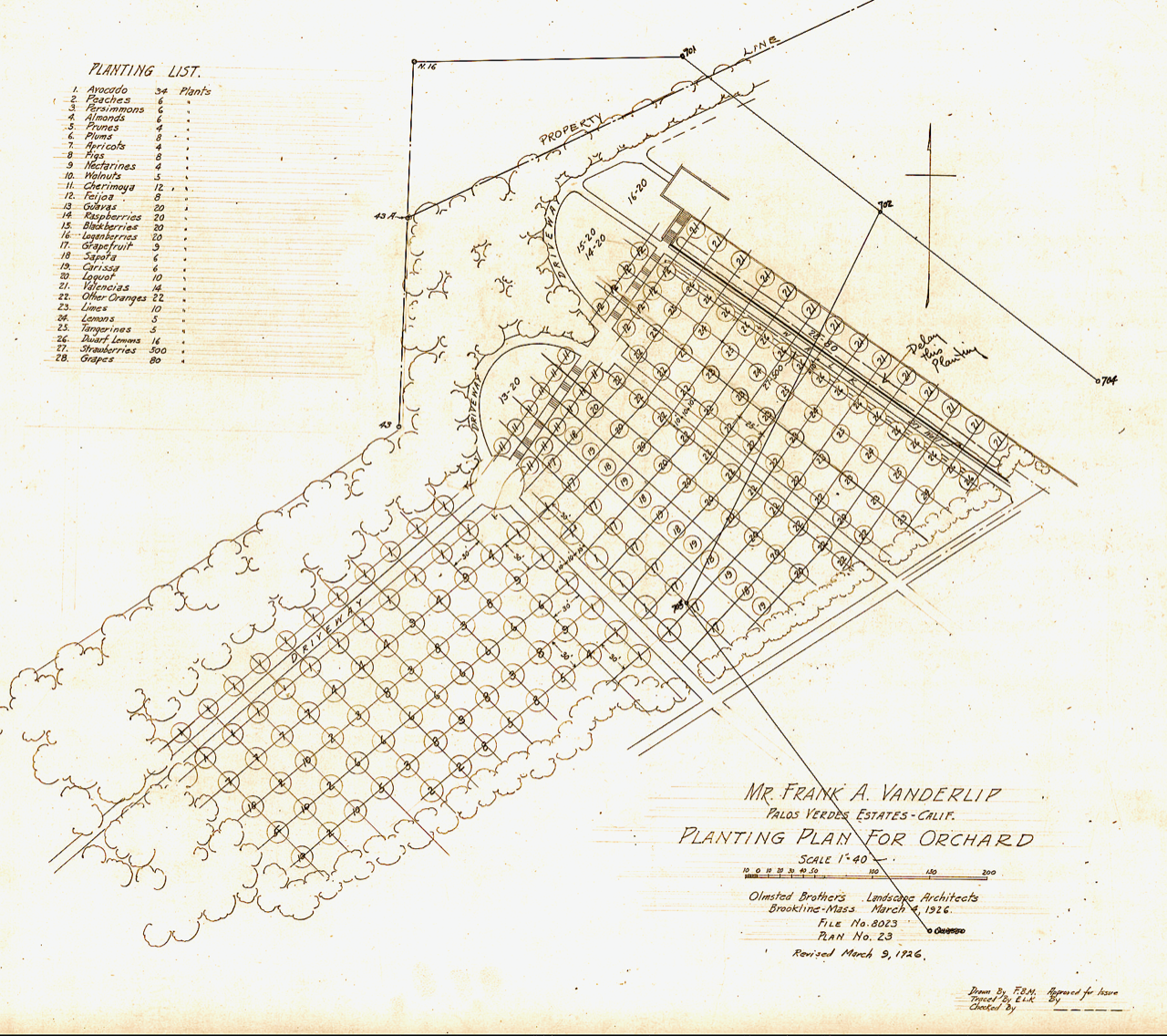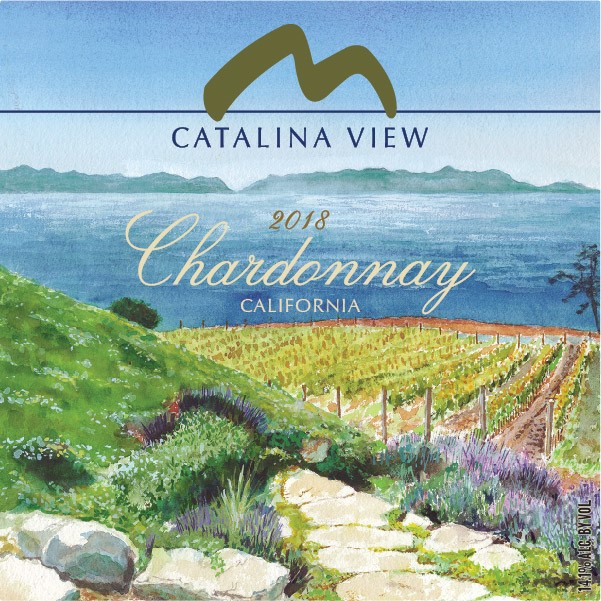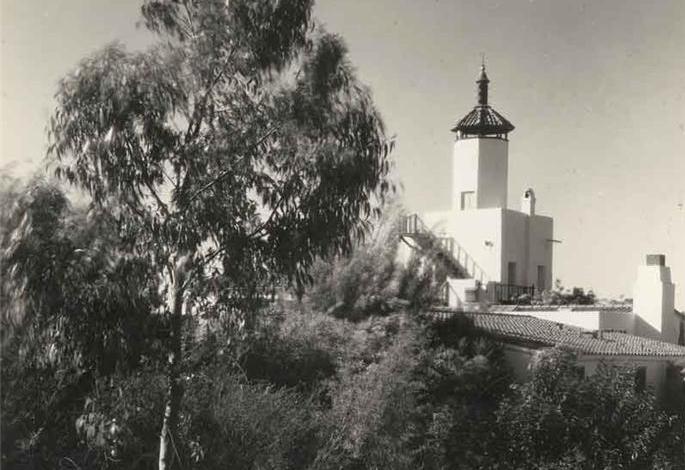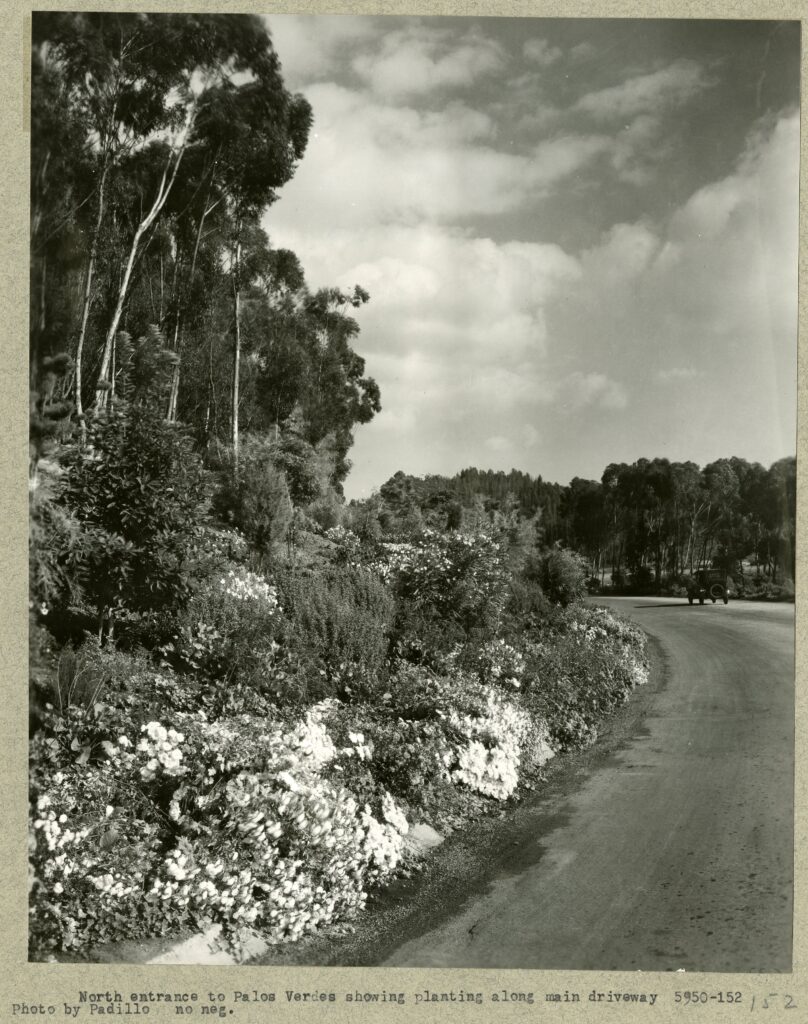
The Olmsted Brothers’ work on Palos Verdes (Project No. 05950) spanned more than two decades. Planning started in 1913 under John Charles Olmsted and finished under Frederick Law Olmsted Jr.
Designed largely in the 1920s, Palos Verdes Estates was a large and very special new town— located in South Los Angeles County. Conceived as a series of villages, it took full advantage of the beautiful setting and became the most extensive suburban community commission ever undertaken by the Olmsted Brothers. It also became a case study in thoughtful ecologically-minded design, adapted to the special conditions of Southern California. At that time, Palos Verdes was the largest un-irrigated development in the country, fulfilling an Olmsted firm principle of reducing the need for water as an appropriate response to the Southern California climate.
The property— 16,000 acres in all— was owned by Frank Vanderlip, president of National City Bank of NY from 1909-1919— who envisioned Palos Verdes as a unique place to gather friends and family. And one requirement— that the developer and project principals live on-site— ensured a uniquely personal design. Not only were Frederick Law Olmsted Jr. (Project No. 08046) and James Frederick Dawson (Project No. 00358) serving as landscape architects, they were community members as well.

Today, 100 years later, Palos Verdes remains a remarkable community, deeply committed to thoughtful preservation. Because of the visionary requirements of Mr. Vanderlip, the community of Palos Verdes Estates still requires that all new development be reviewed and approved by an Art Jury that ensures changes are in keeping with this important cultural landscape. Earlier this year, Malaga Cove Plaza— part of Palos Verdes Estates— was unanimously nominated for listing on the National Historic Register.
Just outside the community— in Rancho Palos Verdes— exciting efforts are also underway to realize the Olmsted vision – and this time in a 121-acre farm. Originally owned by the Vanderlips, the farm, Catalina View Gardens, was purchased in the 1990s by Jim York. York has become not only an accomplished farmer but an Olmsted fan as well. In 2012, he took the Olmsted Plan (see design) for an orchard— found by Frank Vanderlip’s granddaughter, Katrina Vanderlip, in the family files— and recreated it on his hillside, including olive trees, citrus trees, peach trees, apricots, apples, assorted vegetables, five acres of grapevines, two acres of avocados, and more.
Now, the vineyard and orchard (which covers ten acres) are thriving and the Palos Verdes Peninsula has a new claim to fame— designation as an American Viticultural Area.

This designation came earlier this year— and it underscores what Dawson and Olmsted understood – that the Palos Verdes peninsula had unique geographic and climate features— the soil of seashells, morning fog, and a dry Mediterranean climate.
Sold only in California, you can now find pinot noir and chardonnay with the appellation— “Palos Verdes Peninsula.” And several special labels have been designed by none other than Katrina Vanderlip.
This article first appeared in the October 1, 2021, issue of Field Notes by the National Association for Olmsted Parks.











